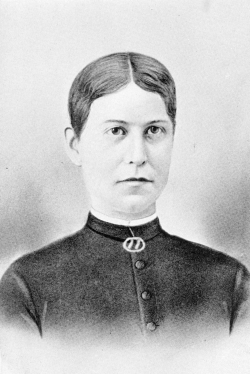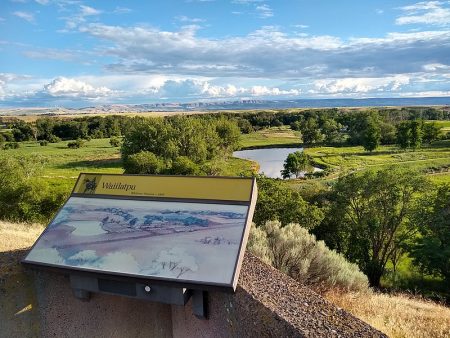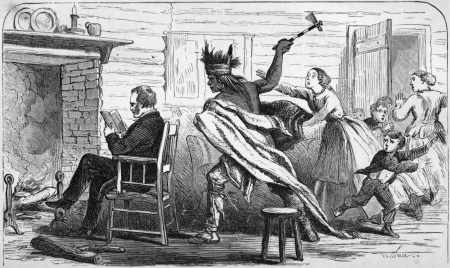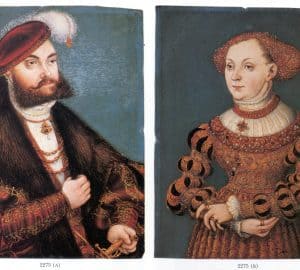
It was a simple wedding. It had to be. The bride and groom had only known each other in the last few months, but they were bound together by a purpose greater than themselves. The groom was a young medical doctor named Marcus Whitman who had offered himself as a missionary to the tribes of Oregon Territory on the west side of the Rocky Mountains.
The bride was Narcissa Prentiss. She was the eldest daughter of Stephen and Clarissa Prentiss. Her father was a respected judge in Amity, New York and also served as an elder in their local Presbyterian church.Narcissa was considered one of the brightest and best young ladies in the community. She had been educated at Franklin Academy and had served as a teacher there for other young ladies. She was red-haired and vivacious and many suitors had sought her hand in marriage. She had a beautiful soprano voice that was famous in the local area. She had been active in a recent spiritual awakening in her community and had been used of God to point other young ladies to a saving knowledge of the Lord Jesus Christ.
Now, she was getting married to a man she hardly knew in order to take a journey to a savage and untamed land of harsh winters, wild animals, and uncivilized heathens. It seemed such a waste. But Narcissa Whitman had no regrets on her wedding day.
She wore a black dress, not because she was mournful, but because there had been no time or money to make any fancier wedding dress. The wedding was a simple one, and included a communion service for the assembled guests. The room was packed with Narcissa’s friends and family who had come to see her once more. The honeymoon was to be a journey that no white woman had ever taken before, a journey overland to cross the continental divide and penetrate the Indian country west of the mountains.
At the close of the wedding, the pastor announced a hymn that Narcissa herself had chosen for the occasion, “Yes, My Native Land! I Love Thee.” The congregation joined together in words that were very appropriate to the solemn occasion:
Yes, my native land! I love thee;
All thy scenes I love them well;
Friends, connections, happy country,
Can I bid you all farewell?
Can I leave you, can I leave you,
Far in heathen lands to dwell?Home! – thy joys are passing lovely-
Joys no stranger-heart can tell;
Happy home! – ‘tis sure I love thee!
Can I – can I say – Farewell?
Can I leave thee, can I leave thee,
Far in heathen lands to dwell?Scenes of sacred peace and pleasure,
Holy days and Sabbath-bell,
Richest, brightest, sweetest treasure!
Can I say a last farewell?
Can I leave you, can I leave you,
Far in heathen lands to dwell?
By this time, the congregation was suffused in tears, and one by one the voices were stifled by sobs. Only a few, including Narcissa in her clear soprano voice, were able to sing the fourth stanza:
Yes! I hasten, hasten gladly,
From the scenes I love so well;
Far away, ye billows, bear me;
Lovely native land – farewell!
Pleased I leave thee, pleased I leave thee,
Far in heathen lands to dwell.
On the final verse, muffled weeping could be heard all through the church. The courageous young bride sang the last stanza alone while the others wept.
In the deserts let me labor,
On the mountains let me tell,
How he died – the blessed Savior –
To redeem a world from hell!
Let me hasten, let me hasten,
Far in heathen lands to dwell.
The very next day, Marcus and Narcissa Whitman set out on their long journey westward. It was hardly a honeymoon, but they braved the rigors of the trail together. Along with their companions, Henry and Eliza Spalding, the Whitmans reached the Rocky Mountains and Narcissa and Eliza became the first white women to cross the continental divide.

Marcus and Narcissa Whitman settled in 1836 among the Cayuse tribe and built a mission station on the banks of the Walla Walla River at Waiilatpu, in what is now southern Washington near the border of Oregon. The Spaldings settled at Lapwai in what is now Idaho and ministered to the Nez Perce tribe.
Narcissa faithfully kept a diary and wrote letters to her mother back in New York. These letters provide a window into the lonely life of a missionary wife on the fringes of civilization. She shares her failures as well as her triumphs, her sorrows as well as her joys.
Narcissa was blessed with a healthy baby girl named Alice Clarissa, named for Narcissa’s mother. The little girl brought a spark of joy to the mission station, but it was a joy cut short by tragedy when Alice was only two years old. Alice picked up her cup and went down to the river bank unattended. Her little body was found, and attempts were made to revive her, but it was all in vain. Narcissa yielded her little girl back into the arms of the Lord Jesus.
Mrs. Whitman became a second mother to several orphaned children who had lost their parents along the increasingly traveled Oregon Trail. With the influx of settlers and the growing presence of white men in the Oregon Territory, many of the tribes began to feel uneasy and suspicious about the motives of the Whitmans. Where they secretly helping the settlers to steal Cayuse land?
The crisis came to a head in 1837 with an outbreak of the measles. The Cayuse had no natural immunity and began to die in alarming numbers, in spite of the best medical care that Marcus could give. Several Cayuse leaders became convinced that Marcus was poisoning them, and they connived a plan to kill Marcus and break up the mission station.

The Whitmans were warned about the plot, but both Marcus and Narcissa decided that they would stay at their post. On the morning of November 29, a Cayuse attacked. A warrior slammed his tomahawk into the head of Doctor Whitman. A general massacre of the men began, and shots rang out across the mission compound. Narcissa gathered the children into a safe place in an upper story, but she was lured out into the open by promises of safety. As she came downstairs, she passed her husband, lying in a pool of blood. Amazingly, he was still alive and they were able to exchange a few tender words. A few minutes later, Narcissa was shot by the murderers and died alongside her husband.
Today, Whitman Mission National Historical Site preserves the mission compound at Waiilatpu. The faithful example of Marcus and Narcissa Whitman continue to inspire every succeeding generation. “Be thou faithful unto death, and I will give thee a crown of life” (Revelation 2:10).

Bibliography
Marcus Whitman M.D. Pioneer and Martyr by Clifford Drury
Where Wagons Could Go by Narcissa Whitman a collection of excerpts from the diary and letters of Mrs. Narcissa Whitman and Mrs. Eliza Spalding





A case of biting off more than they could chew. Why is it so important to people to ignorantly meddle in the lives of people they don’t even know or understand? No wonder the human race is killing the planet and themselves.